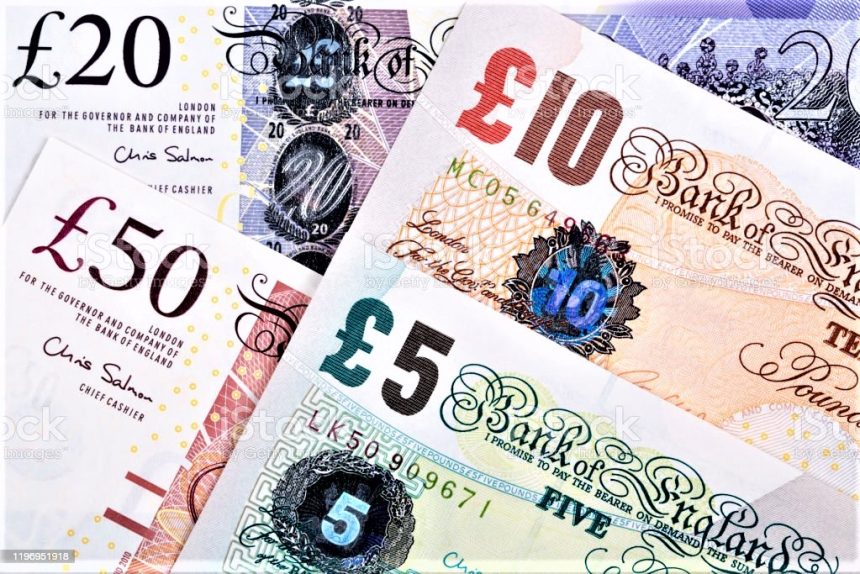Pound surrenders positive UK labour market data-driven intraday bounce
On Tuesday, the Pound Sterling (GBP) fell against its major rivals despite an upbeat United Kingdom (UK) labor market data-driven recovery. The British pound declines after Bank of England (BoE) Governor Andrew Bailey reaffirmed his concerns about the economic prospects. Bailey stated at a Bruegel-hosted event in Brussels at Tuesday’s European session that we (officials) are facing a “weak growth environment”the UK and stated that we are experiencing “heightened uncertainty”.
Bailey also stated in an interview with BusinessLine on Monday that the economic outlook remained sluggish and that the surprise buoyant Q4 Gross Domestic Product (GDP) numbers had not changed the “bigger picture”. In its February monetary policy announcement, the Bank of England cut its year-end growth prediction by half to 0.75%.
The UK economy added 107K jobs, and the unemployment rate stayed stable at 4.4%, lower than expectations of 4.5%.
Bailey made his views on Tuesday, following the announcement of UK employment data. Earlier in the day, the pound sterling rebounded with the release of good employment figures for the three months ending December. The Office for National Statistics (ONS) announced that the economy added 107K jobs, much more than the 35K added in September-November.
The ILO unemployment rate remained stable at 4.4%, compared to an expected 4.5% increase. Investors were concerned about the employment data because business owners had been disappointed by Chancellor of the Exchequer Rachel Reeves’ announcement of increasing employers’ National Insurance contributions (NI). In the Autumn Budget, Reeves increased employers’ social security contributions by 1.2% to 15%, effective April.
Investors are waiting for the UK CPI data and FOMC minutes on Wednesday.
In addition to solid employment numbers, Average Earnings data, a crucial indicator of wage growth, increased in the three months ending December. Average Earnings Excluding bonuses, the rate increased to 5.9%, as projected, from the previous reading of 5.6%. Meanwhile, average earnings, including bonuses, increased by 6%, above predictions of 5.9% and the previous release of 5.6%. High wage growth momentum would cause inflation expectations to rise Force the BoE to keep interest rates at 4.5%.
On Monday, Andrew Bailey also remarked that he sees some softening in the labor market, and has now observed following the data release that the new job data appears on the quantity “not far out of line,” and the wage increase has climbed “less” than predicted.
Investors will now focus on the UK Consumer Price Index (CPI) data for January, which will be revealed on Wednesday.
Daily Market update: Pound Sterling loses vs US Dollar; FOMC minutes in focus.
In Tuesday’s European session, the pound sterling fell by more than 0.2% to around 1.2590 against the US dollar (USD). The GBPUSD pair decreased as the US Dollar recovered. The US Dollar Index (DXY) has recovered to about 107.00 from its two-month low of 106.50 set on Friday.
The greenback recovers as investors anticipate that inflationary pressures from US President Donald Trump’s economic program will endure. President Trump has imposed 25% tariffs on steel and aluminum imports from all countries, with a 10% tariff on China. However, Trump’s reciprocal tariff plan has been delay and is unlikely to take effect before April. Howard Lutnick, President Trump’s nominee Commerce Secretary, stated on Thursday that the President will be ready to proceed on reciprocal tariffs on April 1.
Meanwhile, the US Dollar has been supported by strong expectations that the Federal Reserve (Fed) will retain interest rates at present levels for an extended period of time. Fed Governor Michelle Bowman said in her prepared remarks at the American Bankers Association conference on Monday that the benchmark interest rate is “now in a good place,” allowing the Committee to be patient and pay closer attention to inflation data as it emerges. Bowman also stated that she wants to have “greater confidence” that progress toward cutting inflation will “continue” before supporting monetary policy modifications.
Moving forward, the Federal Open Market Committee (FOMC) minutes for the January meeting, which will be release on Wednesday, will be a big catalyst for the US dollar. Investors will be looking for clues on how long the Fed will hold interest rates in the current range of 4.25%-4.50%.









